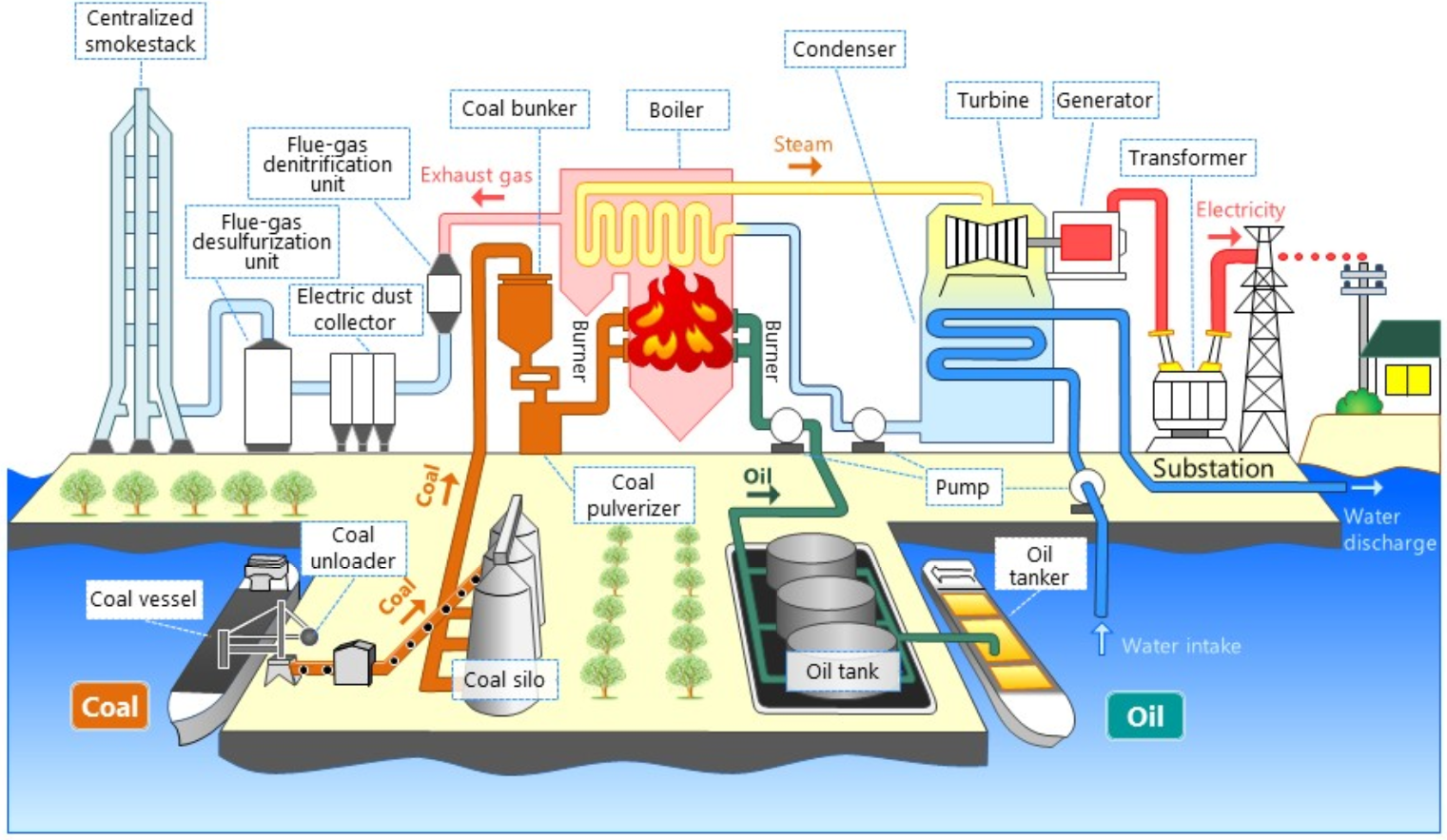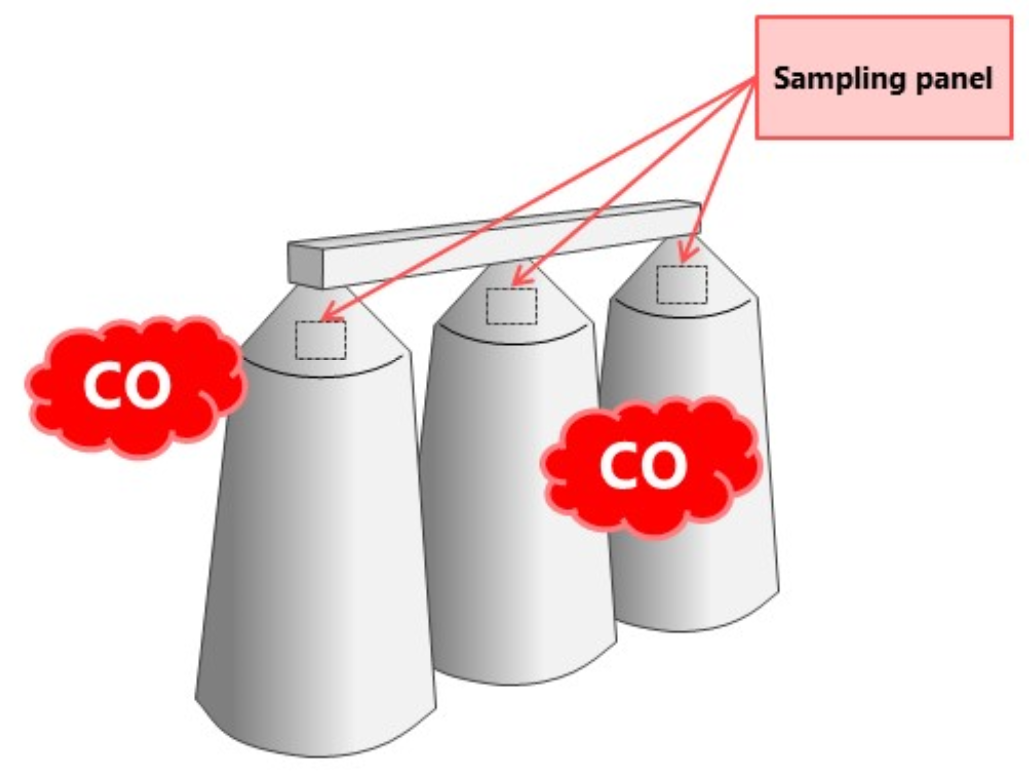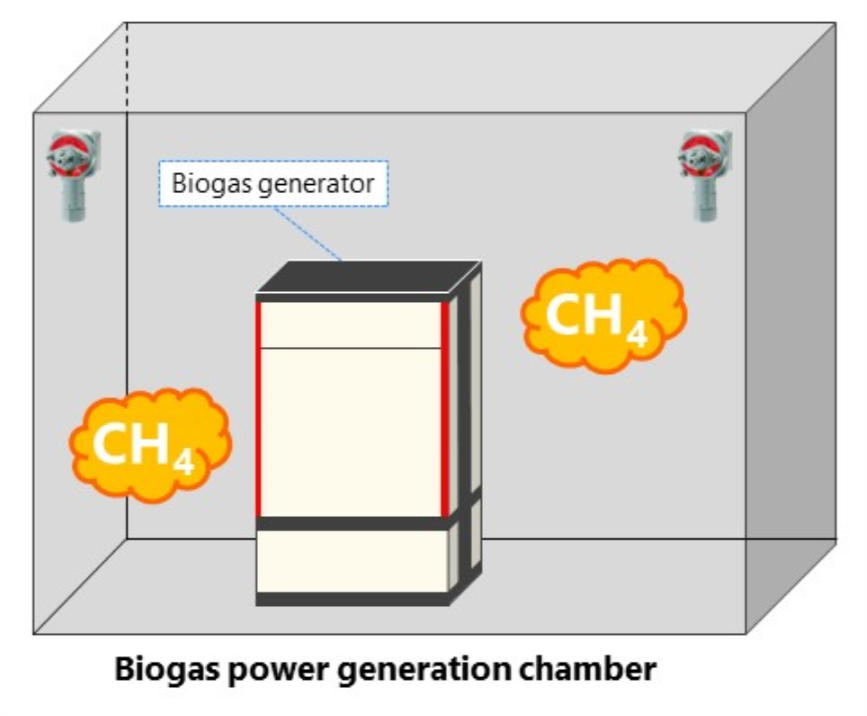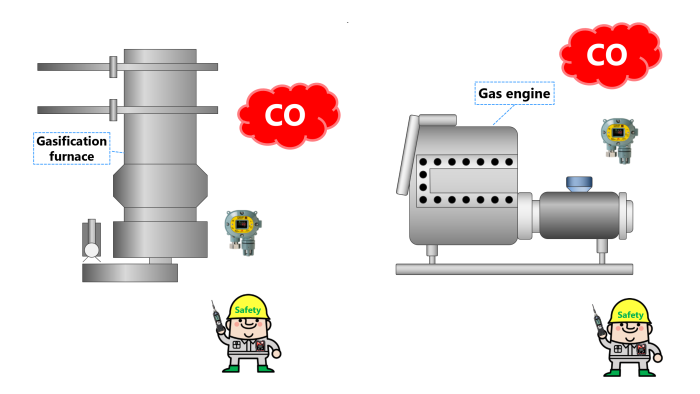Power generation sites
Generation of toxic gases and leaks of combustible gases used as raw material can pose various hazards at thermal power and biomass power generation sites. Each process relies on gas detectors to prevent accidents.
Generation of toxic gases and leaks of combustible gases used as raw material can pose various hazards at thermal power and biomass power generation sites. Each process relies on gas detectors to prevent accidents.

 Click here!
Click here!
Click here!
Click here!
Click here!
Click here!
Click here!
Click here!
Click here!
Click here!
Click here!
Click here!
Click here!
Click here!
Click here!
Click here!
Click here!
Click here!
Coal transported by coal vessels is transferred via belt conveyor to the coal silo for temporary storage.

Coal may react with moisture and oxygen to generate heat. (Self heating) If self heating continues and heating increases heat generation, the temperature may rise, causing the coal to ignite. (Self ignition) Self heating generates both carbon monoxide (CO) and carbon dioxide (CO2) together with heat.
Fixed suction type CO detector heads

Model: RP-D58

Biogas power generation systems extract combustible biogas (methane) from fermented organic waste material (e.g., cattle manure, waste food material, sewage); this biogas drives gas engines or gas turbines to generate electricity.

Take precautions to prevent leaks of methane biogas (CH4).
Fixed combustible gas detectors

Model: GD-A80
For wearing by workers

Model: GX-3R
Wood biomass gasification power generation generates electricity by converting wood chips and similar materials into gas at high temperature, then burning this gas in a gas engine or gas turbine.

Take precautions to prevent gas leaks. The woody biogas produced by thermal decomposition contains high concentrations of gases such as carbon monoxide (CO) and hydrogen (H2).
CO detector heads

Model: SD-1EC
For leak checking

Model: SP-230
For wearing by workers

Model: CO-04
Geothermal power generation generates electricity by using steam from geothermal fluid extracted from geothermal reservoirs 1,000 to 3,000 m below the surface to rotate a turbine.
Geothermal fluid and the steam produced contains various substances, including carbon dioxide (CO2), hydrogen sulfide (H2S), ammonia (NH3), methane (CH4), and sulfur dioxide (SO2).

Take precautions to prevent leaks from the various processes within the plant. The steam from geothermal fluid contains toxic gases.
H2S/SO2 detector heads

Model: SD-1EC
Pre-work gas detector

Model: GX-6000
Personal H2S/SO2 gas detector for workers

Model: GX-3R Pro
Fixed gas detectors are recommended for the following applications:
Portable gas detectors are recommended for the following applications: